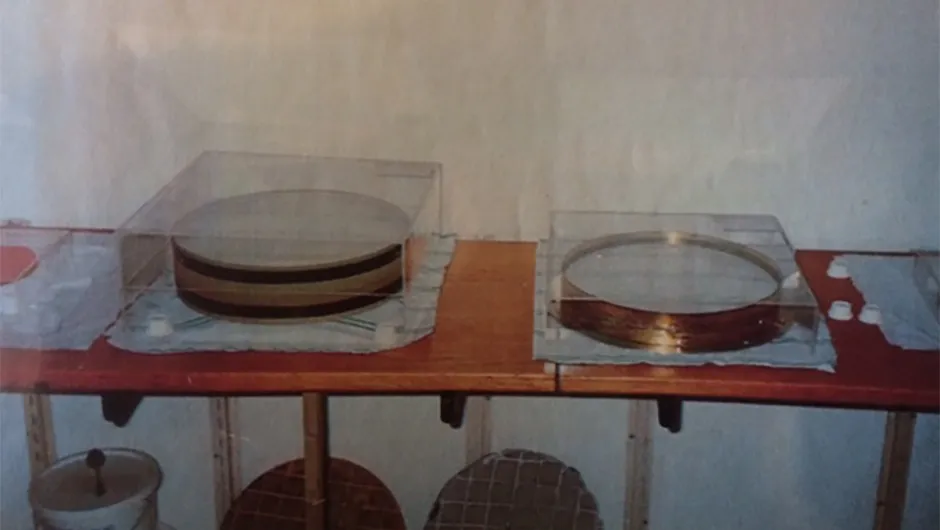The Spaceguard Centre as it appears today. Credit: The Spaceguard Centre.
Being a total duffer at DIY has its merits, as you are seldom called upon to make, fix or build anything due to the ineptness shown during previous endeavours.
When I first turned my hand to observatory construction it sadly followed a well-trodden path of misery, but in the years that followed that early attempt, I’ve been fortunate to witness others deliver more fruitful efforts!
Back in May 1990 I visited Trelech Observatory, a project then under construction near Monmouth in south Wales, some 1,000 feet above sea level and commanding spectacular views of the surrounding the area, encompassing the Black Mountains and the Brecon Beacons (the latter, of course, now being a certified International Dark Sky Reserve).
I had approached the project directors at Trelech, Brian Williams and Cheryl Butcher, to see if I could cover the project for my Stargazing column, which I then wrote for a local newspaper.
My advances were more than welcomed and after arriving, an exchange of pleasantries and beans on toast in their caravan abode on a muddy worksite, I was given a tour of the observatory.
The aim of the directors, whose passion for astronomy was noticeable, was the construction of a not-for-profit observatory with access for all interested in the night sky.
Provisions had been made for people with disabilities, and with a view to the observatory being accessible to school parties and interested organisations alike, I became totally sold on their vision.

At this point, I may lose some of you, (myself included), and for that I can only apologise, as the duffer in me once again steps forward.
The observatory showpiece comprised a 6-metre observatory dome housing a 13-inch apochromatic triplet refractor made using three glasses: a crown (BK7) glass front element; a very rare Borate flint (BaFN-10) glass middle element, and a rare flint (BaFN-10) glass rear element.
Are you still with me?
However, during the tour, it wasn’t so much the telescope that caught my eye, but this fascinating object that had been mentioned to me that I knew nothing about, a camera obscura.
The obscura allowed an image of the surrounding countryside to be projected onto a circular table allowing many to see the spectacle all at once; a sort of shared experience.
The obscura, fitted with an f/15 doublet objective of diameter of about 340mm, could also project an image of the Sun onto a facing wall, and at night, project a 2-metre image of the Moon.
Following a look at the gubbins that would eventually fit inside the main telescope and another refreshment break, I thanked Brian and Cheryl for their hospitality and retreated to write my piece.
In the ensuing years after 1990, the project at Trelech transferred to Knighton in Powys, eventually evolving into the Spaceguard Centre, and today certainly well worth a visit.
Needless to say, my own attempts at observatory construction are best swept under the carpet.
When I finally got round to constructing one, the ‘dome’ was at best shabby, with various pieces of wood holding up a polythene cover that in the end looked like an imploded Eden Project dome.
Totally unworkable, with difficulty getting in and out; not to mention the fact that I could only properly see the northern aspect of the sky.
If I had any sense at the time, the perfect solution for me would surely have been a construction similar to Sir Patrick Moore’s wooden run-off shed: simple, effective, and easy to operate.
On a further note with regards to telescope construction, whilst working in the BBC Newsroom in Cardiff in the mid 1980s, I do recall one of the secretaries making a reference to someone in her family undertaking such a project.
She recalled with great hilarity how he had managed to fit the mirror inside the scope at such an angle that he could only see himself through the eyepiece.
Thankfully, an array of telescope making and observatory construction guides and manuals are available, so we can bypass the stone knives and bearskins approach.
